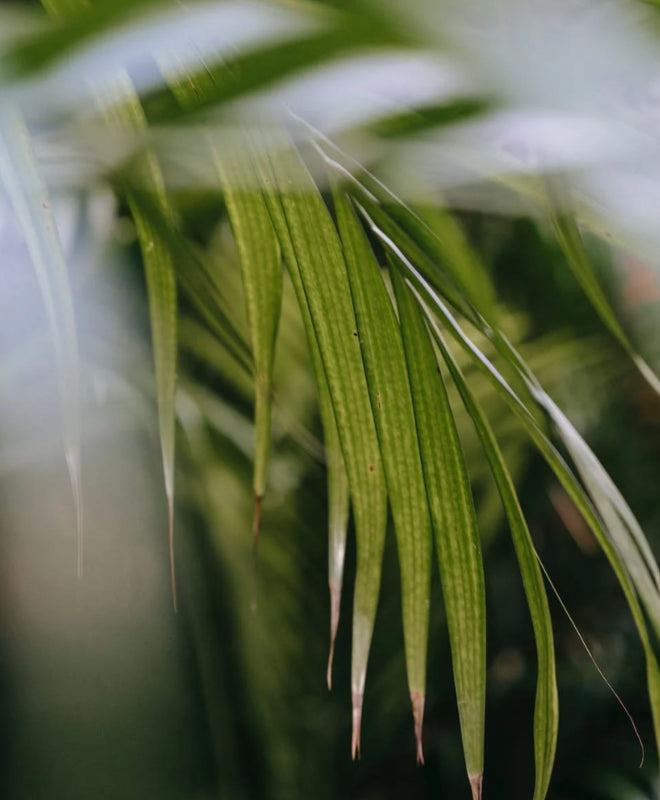
Care sheet: Kentia palm tree
Pas le temps de tout lire ? 👇Cliquez ici pour un résumé👇
Sommaire

The Kentia is a palm that belongs to the Arecaceae family. With the most beautiful decorative effect, this indoor plant has long, intense green leaves with highly depolluting qualities.
The Kentia is deployed under the very wise name of Julia at POUSSE
Originally from Oceania, it is often associated with white sand beaches, but it nevertheless also thrives in the shade.
Exposure
To grow as it pleases, the Kentia needs strong light but without direct exposure to sunlight.
Watering
Overheated interiors are to be avoided and it is better to wait until the soil has become dry between two waterings. Prefer for him the rain or a good spray in winter of non-calcareous water. About twice a month stimulate its growth by adding fertilizer. A cleaning with a damp cloth will allow it to retain all its splendour.
Cultivation errors
You can install it outdoors in the summer but, its stems being fragile, sheltered from the wind and in a shady corner. A temperate environment is preferable, preferably between 16 and 24°C, under a veranda or protected by a bay window. Take care to avoid the rotting of its roots, which is common in the event of excess water.
Diseases and pests
Its main enemies are red spider mites and scale insects.
Red spiders are the bane of Kentia! The worst enemies there are, because their attack generates a serious weakening of the plant.
Consequences: By sucking the sap from your palm tree, they exhaust it and cause serious yellowing of its leaves.
Solution : A preventive treatment is best, in case of infestation your plant must be treated.
Mealybugs feed shamelessly on the sap of the palm tree. Insinuating themselves into inaccessible areas, they colonize the main stem but also attack young shoots.
Consequences: These insects suck the sap from the plants that host them, causing premature leaf drop.
Solution : The fight is delicate for amateurs, but a mixture made of alcohol, black soap and organic oil can be enough.
How to repot an Aloe Vera?
Planting in pots or in the ground: It is in March and every two years that the Kentia must be repotted. It's when the leaves start to damage, as well as when the roots cover the root ball, that you have to start worrying about it.
The Kentia must have a container to its size, to be able to unfold in an elegant and appropriate way. Those at POUSSE can reach up to 2 meters high, you will understand the importance of such a measure.
The palm pot must be deep enough, with a layer of gravel at the bottom to facilitate drainage. A specific potting soil for green plants is preferred, so as to provide it with the necessary nutrients.
During the operation, be sure to position the palm tree in the middle of the pot. Complete with balls of clay on the surface, to avoid too rapid evaporation, add a little special fertilizer and moisten the foliage.
The cuttings are done by division of the offspring, to be practiced from May to September. It is a plant that is hardly familiar with the process, so it is only possible if a few seeds have germinated near the mother stem.
Good to know
The Kentia Palm is an indoor plant par excellence, which gives verticality to the surrounding decor and an undeniable note of elegance to your interior. It is suspected of bringing well-being while knowing how to be charming.
POUSSE, the plant architecture agency that reconnects your spaces in Lyon, Paris and Bordeaux to nature.
Contact us: bonjour@pousse.fr
Written by Léa Carré